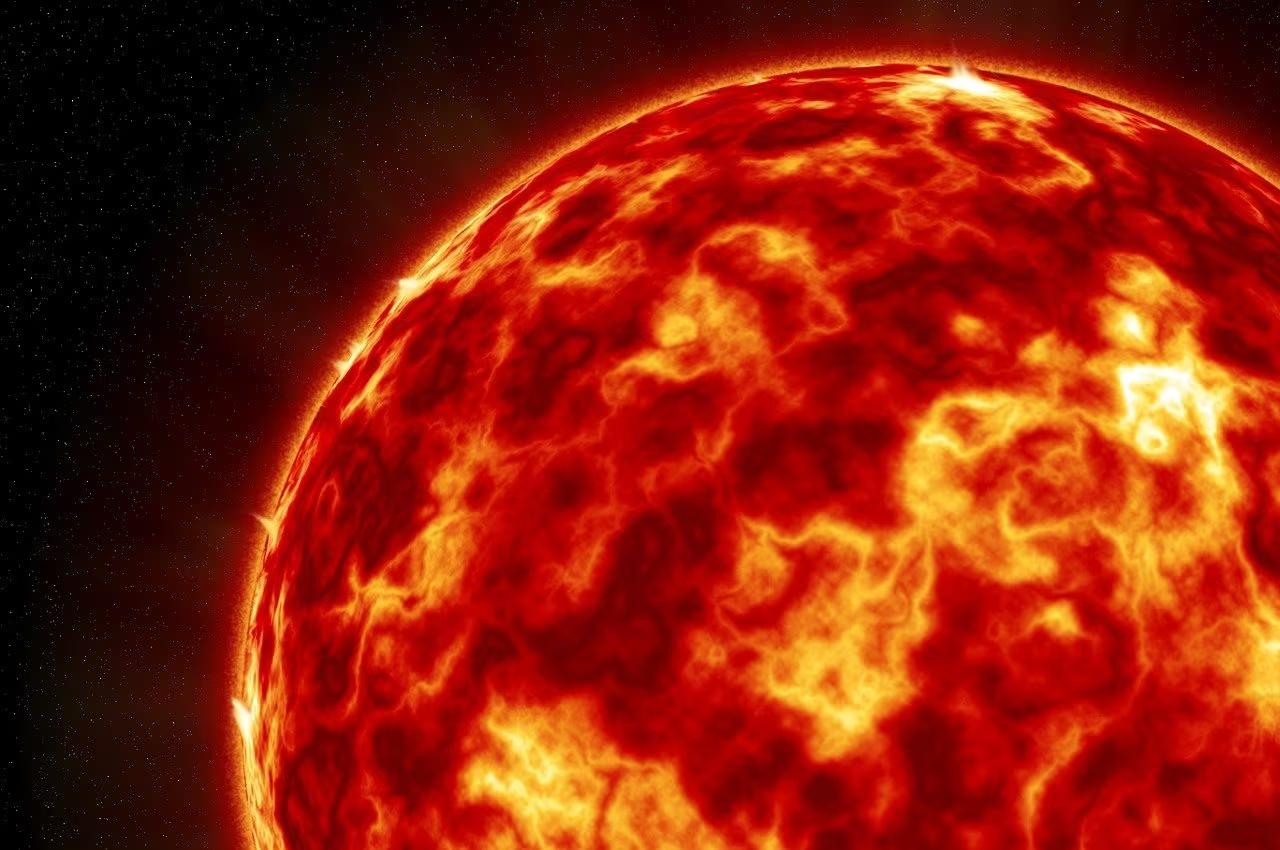A Violent End for Inner Worlds: Red Giants Are More Destructive Than Expected
New analysis of data from NASA’s Transiting Exoplanet Survey Satellite (TESS) has revealed a sobering truth about the fate of planetary systems: aging stars in their red giant phase are significantly more destructive to their orbiting planets than astronomers had previously estimated. The findings suggest that the violent end awaiting Earth is not an anomaly, but a common cosmic occurrence.
Led by Dr. Marc Hon, a postdoctoral fellow at the University of Hawaii Institute for Astronomy, the research team identified evidence of planetary destruction in an unprecedented 34 stars. This number is dramatically higher than the handful of engulfment events previously confirmed, providing a crucial, large dataset for understanding the final stages of stellar evolution and the survival rates of planets.

The Signature of Destruction: Asteroseismology and Lithium
When a star like our Sun exhausts the hydrogen fuel in its core, it begins the process of becoming a red giant. The core contracts and heats up, causing the outer layers to swell dramatically, sometimes expanding hundreds of times their original size. This expansion is what ultimately swallows any planets orbiting too closely.
The challenge for astronomers has always been confirming that a star has recently destroyed a planet, as the evidence is usually subtle and short-lived. Dr. Hon’s team overcame this using two key observational signatures:
1. Asteroseismology: Reading the Star’s Heartbeat
The primary tool used in this study was asteroseismology, the science of studying the internal structure of stars by analyzing their natural oscillations, often referred to as “starquakes.” TESS is exceptionally good at measuring these tiny changes in stellar brightness.
By analyzing these oscillations, researchers can determine the star’s internal rotation rate. When a planet is swallowed by its host star, the planet’s orbital angular momentum is transferred to the star’s core. This transfer causes a measurable, rapid increase in the star’s core rotation speed.
“The planetary material acts like a cosmic brake, transferring energy and causing the star’s core to spin up slightly, a clear sign that a massive object has recently been consumed,” explained the researchers.
2. Lithium Enrichment: A Rare Element Anomaly
The second, equally critical signature is the presence of lithium enrichment in the star’s atmosphere. Lithium is a fragile element that is quickly destroyed by the high temperatures deep within a star. Therefore, finding a significant amount of lithium on the surface of an older star is highly unusual.
Planets, however, contain lithium. When a star engulfs a planet, the planetary material—including its lithium—mixes into the star’s outer layers. Because the star is already in its red giant phase, its outer layers are convective, meaning the lithium is quickly brought to the surface, where it can be detected spectroscopically.
By combining the evidence of rapid core rotation (from TESS asteroseismology) with the presence of surface lithium (from follow-up observations), the team could confidently confirm that these 34 stars had recently undergone a planetary engulfment event.
The Sun’s Inevitable Red Giant Phase: What This Means for Earth
The findings provide a stark preview of the ultimate fate of our own solar system. Our Sun, currently a stable yellow dwarf, is roughly halfway through its main sequence life. In approximately 5 billion years, it will exhaust the hydrogen fuel in its core and begin its transformation into a red giant.
During this phase, the Sun will expand dramatically, growing large enough to consume the orbits of the inner planets:
- Mercury and Venus will be vaporized and absorbed first.
- Earth is highly likely to be engulfed. While some models suggest Earth might survive the initial expansion, the intense heat and tidal forces would render the planet uninhabitable long before it is physically swallowed.
- The habitable zone will shift far outward, potentially warming up moons of Jupiter and Saturn, though this temporary habitability would be short-lived.

Implications for Stellar Evolution and Planet Survival
This study fundamentally changes the statistical understanding of planetary survival. The high rate of destruction observed suggests that the inner regions of most planetary systems are highly unstable once the host star begins to age.
Key Insights from the 34 Engulfment Events:
- Commonality: Planetary engulfment is a common, rather than rare, mechanism in stellar evolution.
- Data Validation: The study validates the use of asteroseismology combined with chemical analysis (lithium) as a robust method for detecting recent destruction events.
- Mass Transfer: It confirms that the transfer of angular momentum from the planet to the star’s core is a measurable physical process.
This research is crucial for refining models of stellar evolution, particularly the late-stage physics of red giant stars. Understanding how often and how violently stars interact with their closest planets helps astronomers predict the final state of exoplanetary systems observed throughout the galaxy.
Key Takeaways for the Reader
For those seeking to understand the implications of this major astronomical finding, here are the essential points:
- New Frequency: Astronomers found evidence of planetary destruction in 34 red giant stars, confirming that this process is far more common than previously assumed.
- Methodology: The discovery relied on TESS data and the technique of asteroseismology (measuring star oscillations) to detect a rapid spin-up in the stars’ cores.
- Chemical Marker: The destruction was confirmed by the unusual presence of lithium enrichment on the stars’ surfaces, a sign that planetary material was recently absorbed.
- Earth’s Fate: The findings reinforce the prediction that the Sun will expand into a red giant in about 5 billion years, engulfing and destroying Mercury, Venus, and almost certainly Earth.
Conclusion
The TESS mission continues to provide groundbreaking data, not just on the formation of new worlds, but on the inevitable demise of old ones. Dr. Hon’s work provides compelling observational evidence that the violent end of inner planets is a standard feature of stellar aging. While the destruction of Earth is billions of years away, this research offers a profound look into the cyclical nature of the cosmos, where the death of a star means the destruction of its closest companions, fueling the star’s final, brief burst of activity before it settles into its final state as a white dwarf.
Original author: Robert Lea
Originally published: November 7, 2025
Editorial note: Our team reviewed and enhanced this coverage with AI-assisted tools and human editing to add helpful context while preserving verified facts and quotations from the original source.
We encourage you to consult the publisher above for the complete report and to reach out if you spot inaccuracies or compliance concerns.

